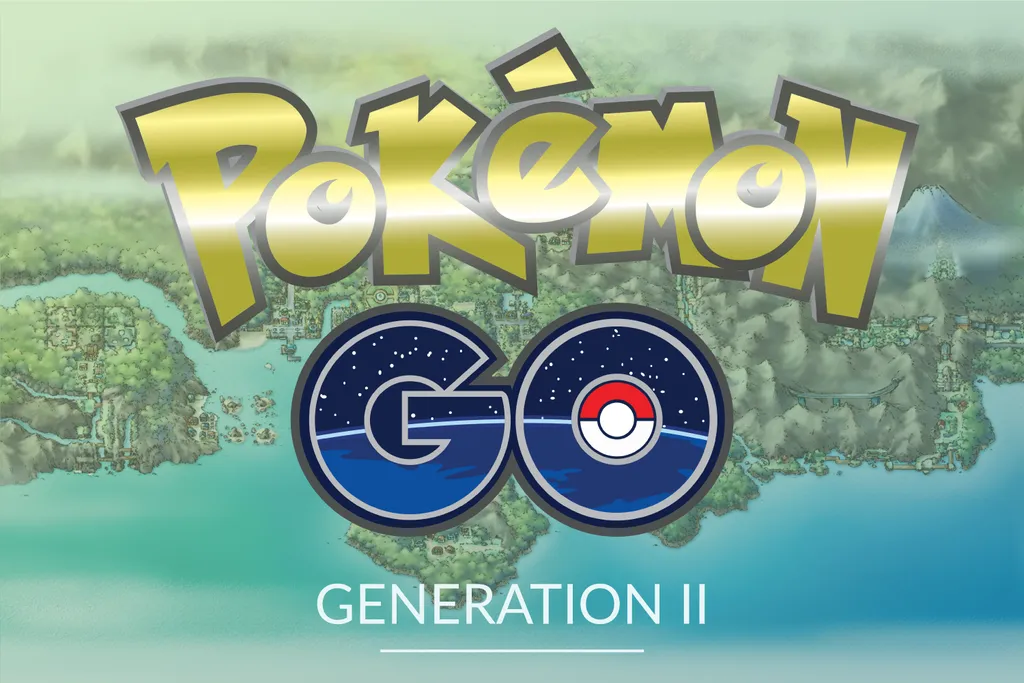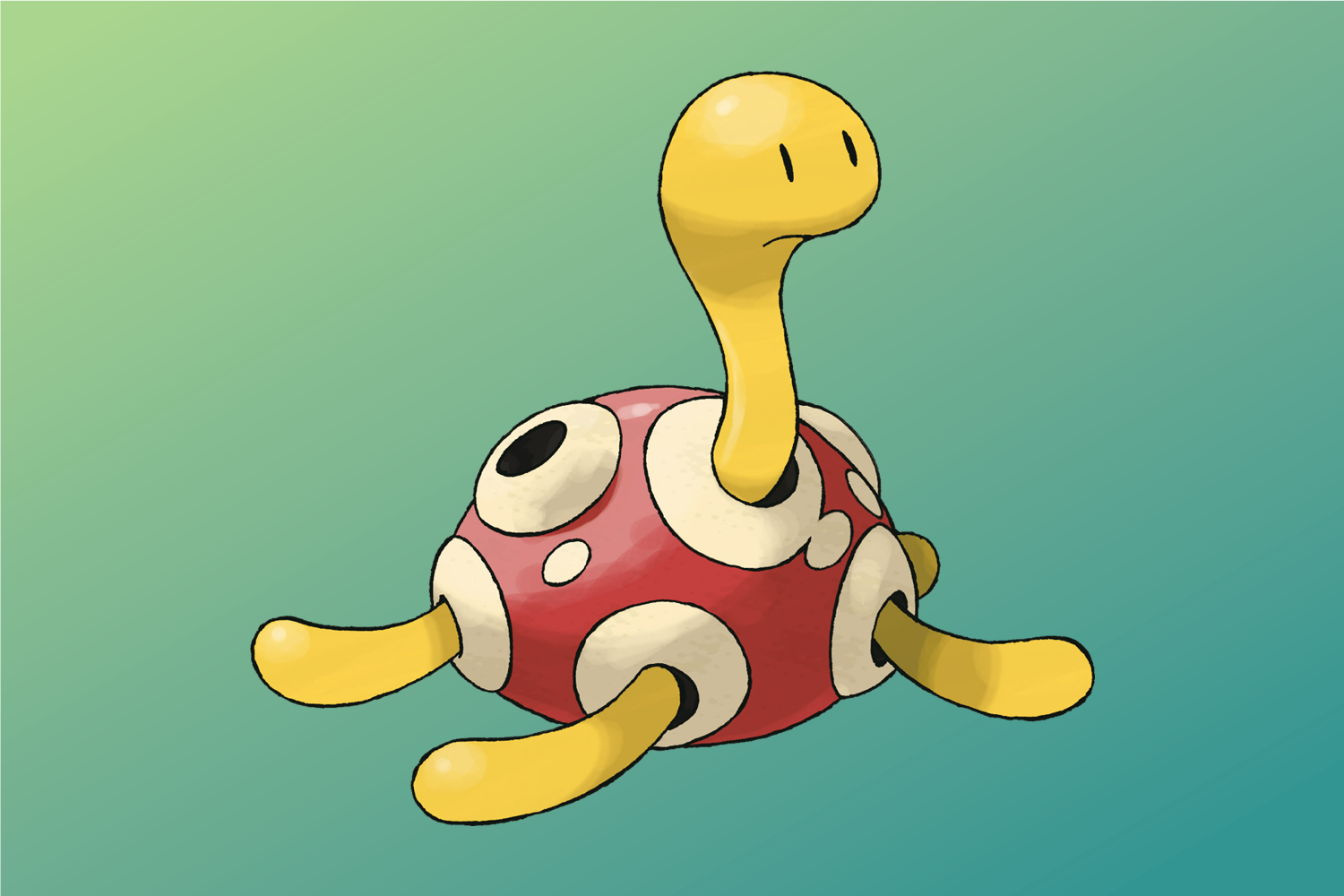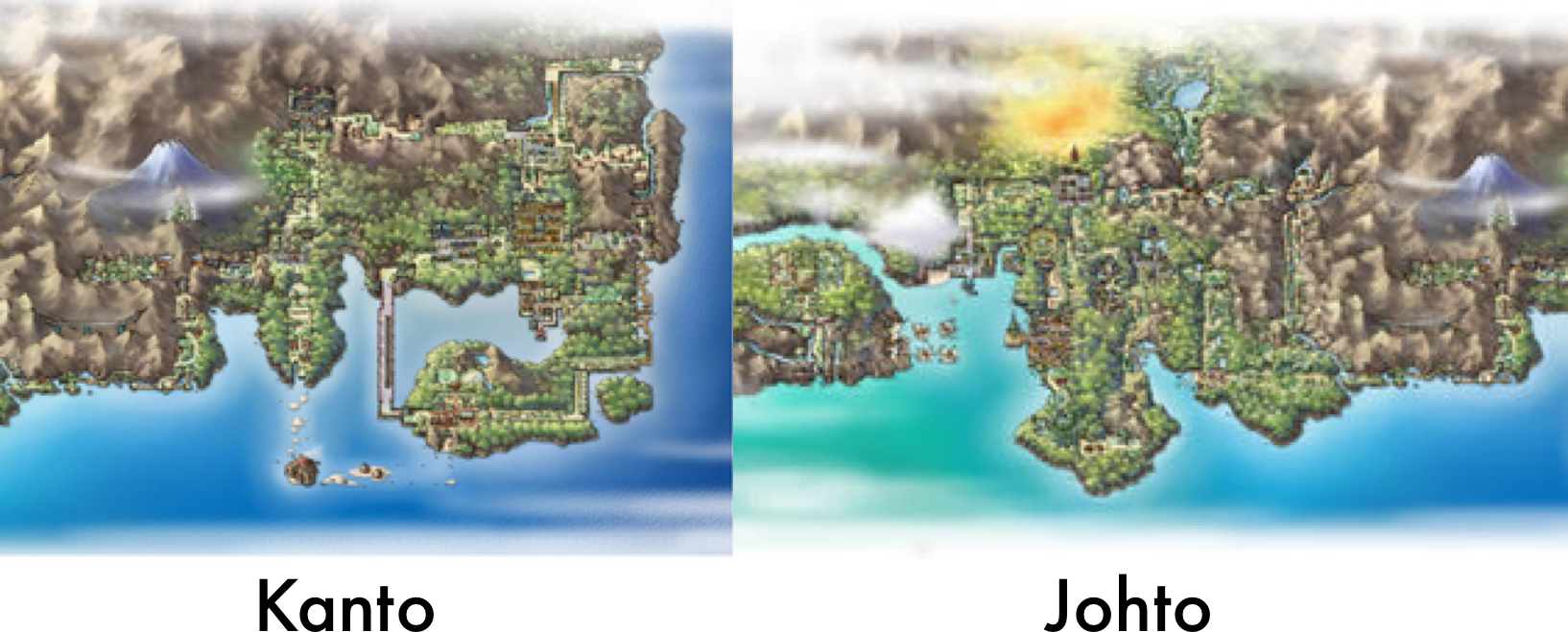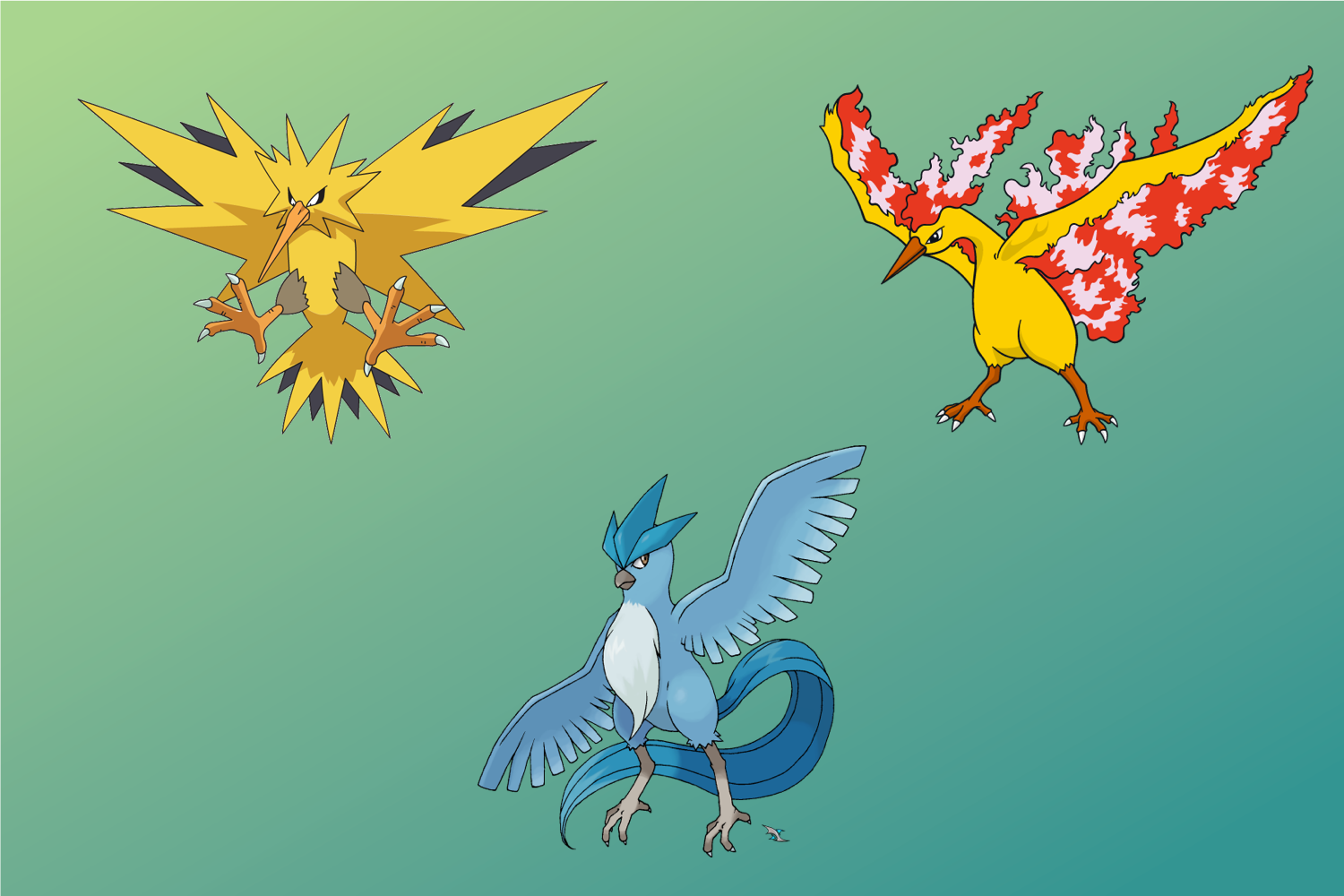There’s a lot of speculation right now on how Niantic will introduce the next generation of monsters in the augmented reality mobile game Pokémon Go, which is rumored to happen in early December 2016. Although Pokémon Go has been a hit, Niantic has made some questionable game design calls in its rocky 6-month history (remember those server outages? Where’s a working tracking system? Minor text fixes?), and Generation II may be the biggest change since the game’s initial launch in July 2016.
Niantic has a shot to get Generation II right, but what would that look like? We’re three Pokémon Go players who’ve caught them all* and spent years working in design, marketing, product, and investment at tech companies, and we put together our thoughts on the best way to do it. Our bios are at the bottom of this piece.
*available within the US at the time of writing
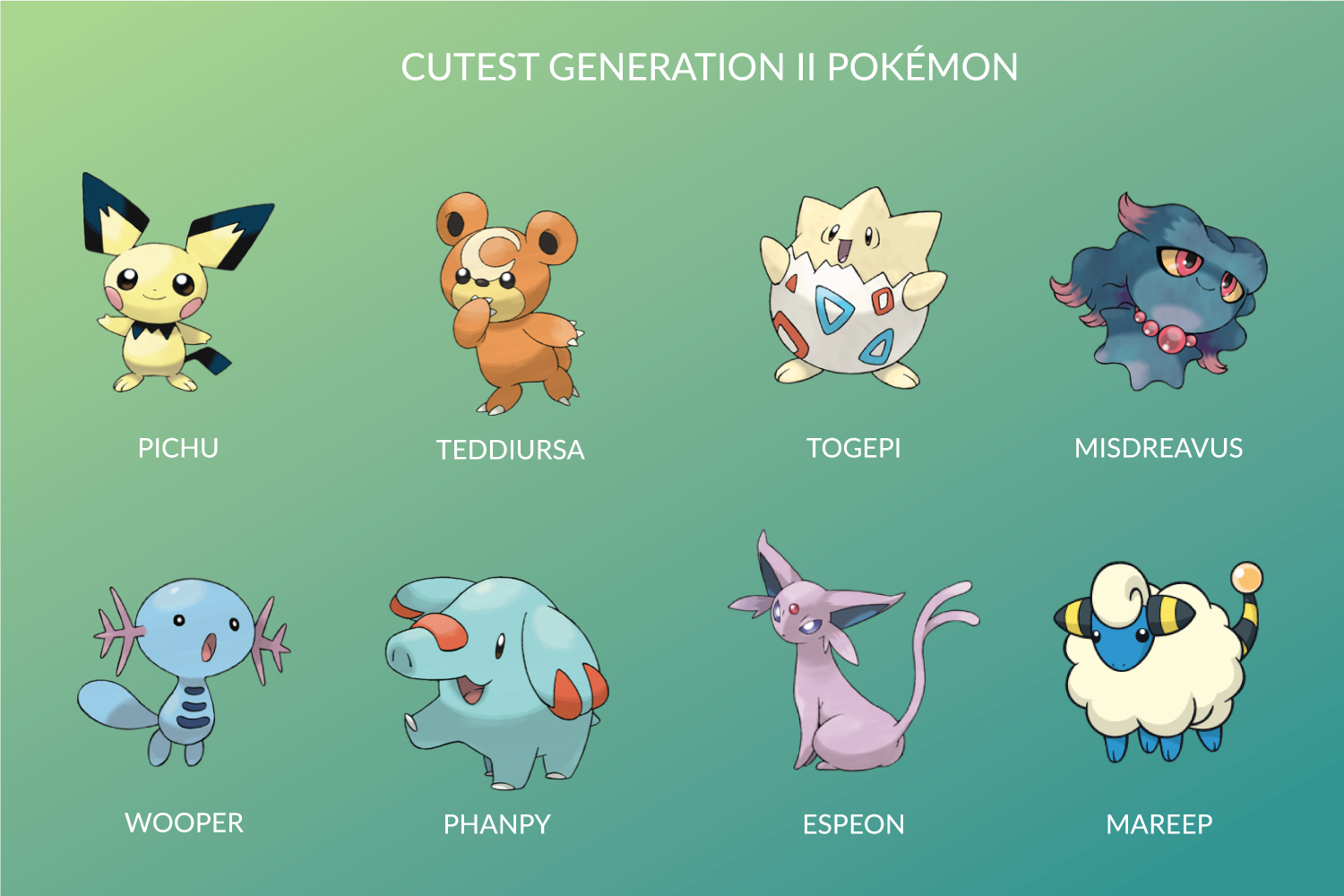
Be warned that this exploration is a bit obsessive…because we’re obsessed. This is varsity-level PoGo right here. Apologies in advance.
We see two main ways to approach the Generation II rollout:
- grouped (release new and old Pokémon together in the same world), or
- separated (keep the generations separate through mechanics we’ll discuss later on).
We’ll discuss the pros and cons of both below, but we prefer the second (separated) approach.
GROUPED
Release Generation II into the game as it exists today
If we’re being realistic, Niantic has taken the lazy approach to most of its features and rollouts. That’s why we think the grouped approach is the likeliest one Niantic will take, despite there existing some better options. By “grouped,” we mean the game will dump Generation II into the same world that currently exists in Pokémon Go: you’ll see cleffas alongside clefairies.
How could this work? Niantic could:
Display Pokémon generations based on user progress
Niantic could automate the Generation II appearance using a sliding scale that determines which Pokémon spawn for which players. Using one or more in-game metrics as a baseline–such as level, number caught, number evolved, or Pokédex entries logged–the game could display more Generation II Pokémon for more experienced players. The more experienced you are, the lower percentage of Generation I Pokémon you see.
The main negative here is that the game assumes that you’re less interested in seeing the Generation I Pokémon, which may not be true if you’re grinding toward a particular evolution or hatch.
Double the spawn rate
The game could double the number of Pokémon on the map: 50% Generation I and 50% Generation II. But this would get messy quick since there are seven generations of Pokémon. They couldn’t keep up that pace or the map would be flooded with spawns.
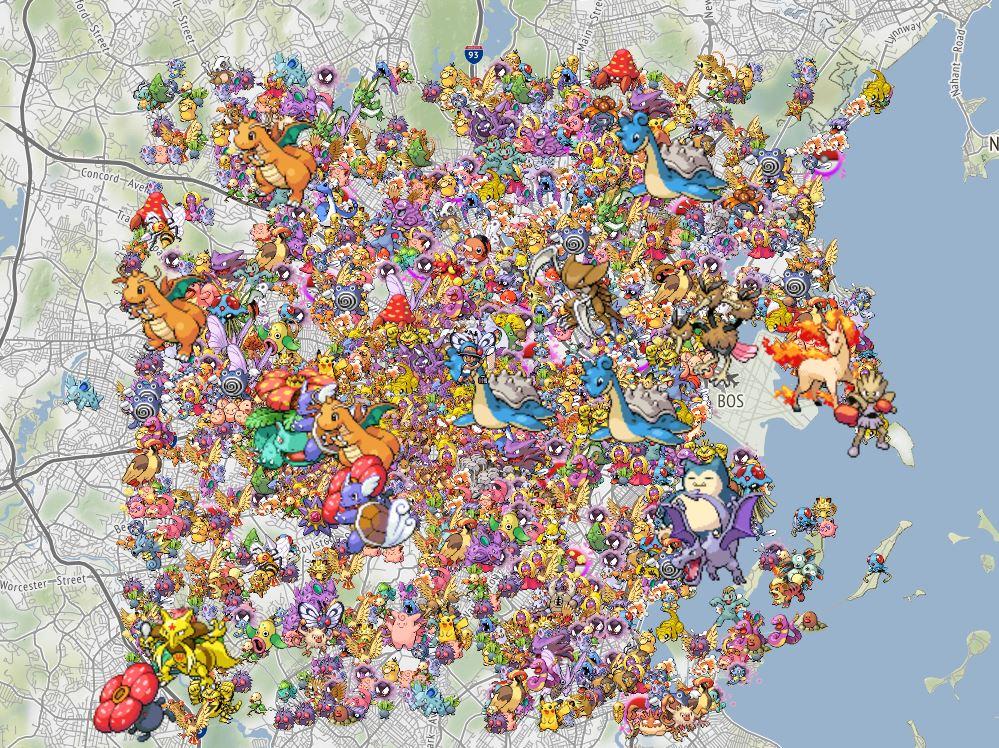
Keep spawn rate the same
If the spawn rate stays the same and the number of creatures doubles, each Pokémon would become rarer. This would dilute the experience and reduce the appearance of Pokémon across both generations. Of course, Niantic could continue to change nests like they do now, or introduce other methods to ensure we encounter a variety of Pokémon on a rotating basis. But this is also not scalable with each new generation.
Gradual Generation II release
Niantic could also release a few new Pokémon at a time, on a daily or weekly basis, to boost its daily active user count. If you knew that Tuesday was pichu day in the app, you might log in. This approach brings in new Pokémon in waves, but is delayed gratification fun? There’s something really appealing about an entirely new set of monsters in the world, and a drip strategy might feel too restrained…or maybe even tortuous for those of us who’ve been waiting for months for Generation II.
Still, this approach makes some sense since most players are already assuming some kind of gradual or event-based release of the legendary Pokémon Articuno, Moltres, and Zapdos. We’ve already seeing daily gameplay bonuses make their way into Pokémon Go; perhaps it’s a matter of time before the game mechanics in PoGo start to resemble The Pokémon Company’s other, more traditional mobile games, like Pokémon Shuffle.
Change spawns for individual players
What happens when a new and an experienced player are at the same spawn point? Right now, all players “share” a nearly identical game environment: they see the same Pokémon, in the same place, just with different combat power (CP). Seeing the same Pokémon show up in the world is one of the most fun parts of Pokémon Go (remember everyone screaming and rushing to get that vaporeon in Central Park?), and it would be a bummer if the next roll-out changed that. One solution is to have the same spawn point appear to both players, but they see different Pokémon from different generations of the same rarity. For example, a new player sees a Flareon and an experienced player sees an Umbreon. But it’s unclear what different players might see for a loner evolution like Shuckle. Aww, shucks.
Show only evolvable Pokémon
To increase the diversity of spawns while not changing spawn rate too much, Niantic could stop spawning evolved forms in the wild. For example, you’d only find pichus, but no more pikachus or raichus. This ensures that you can complete your pokédex, but shifts the playstyle emphasis to grinding and evolving rather than catching in the wild.
Honestly, this approach is such a letdown that we can’t imagine Niantic would do it. It would also be an even bigger departure from how you discover creatures in the original Nintendo games. Catching a rare Pokémon on the end of an evolution is one of the most exhilarating parts of Pokémon Go. But then again, they’ve moved so far away from tracking as a key part of the game that this could be where they’re headed.
SEPARATED: make users choose a region/generation
Think of the separation as though each generation of Pokémon is found in a different region. This is how it’s worked in the original Pokémon games, like Red/Blue to Gold/Silver on Gameboy in the late 90’s. Red/Blue took place in the Kanto region and had players catch and battle the 151 Generation I Pokémon. In the sequel Gold/Silver, players traveled to a new, second region, Johto, where they encountered the 100 Generation II Pokémon.
Keeping the two generations divided by location also makes sense for Pokémon Go. Players could choose to “visit” Johto if they want to catch Generation II Pokémon* or Kanto for Generation I, maybe in the settings or on the app sign-in screen. Everything in your backpack would carry over when you make a trip, including your Pokémon, Pokédex entries, items, and medals.
*Technically Generation II includes Pokémon 1 through 251, but in this case we mean that you will only see Pokémon 152 -251 in Johto.
The medal system in Pokémon Go sets up this approach nicely and suggests Niantic is already thinking about different regions, as the gold medal awarded for completing your first 100 entries in the Pokédex is called “Kanto.” That sets up a new “Johto” medal for filling out the next generation’s Pokédex.
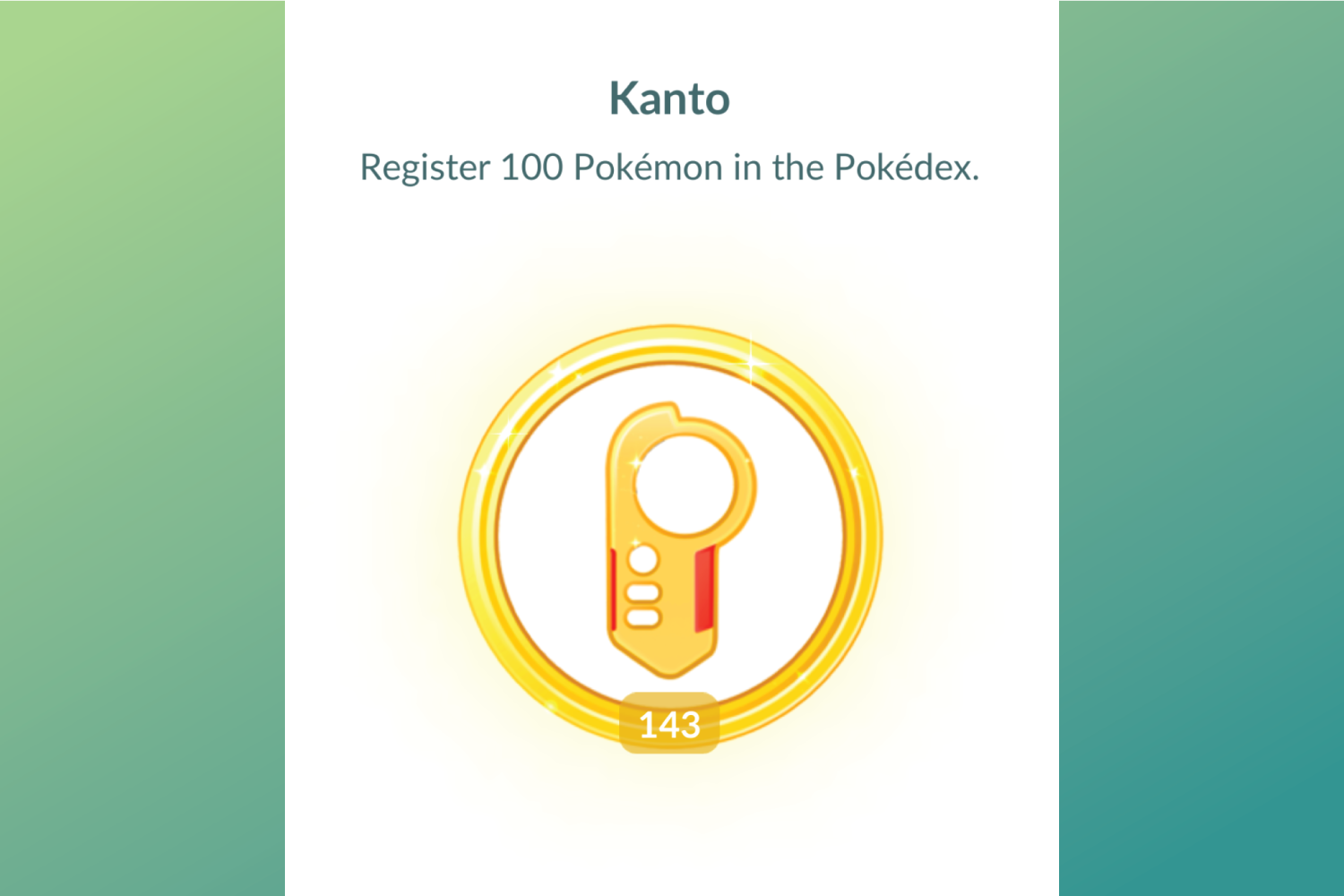
We like this method because it doesn’t excessively dilute Pokémon diversity and gives players choice and control over which types they see. You’d get a lot of the Pokémon you want to see and none of the types you don’t. And maybe we’re nostalgic, but we like that it’s in line with previous Pokémon titles that used separate national and regional Pokédexes.
New user onboarding
In our proposed system, a new user who’s never played Pokémon Go before would have to start with Generation I. They’d get the same starter Pokémon choices of charmander, bulbasaur, or squirtle (or pikachu with an Easter egg) and same team choice at level 5 that existing players did.
To unlock Generation II, players would have to reach a certain milestone. We thought about using levels, number of catches, number of evolutions, and more here, but ultimately prefer using medals. Achieving the gold Kanto medal makes a lot of sense as a gateway to Generation II: it’s unlocked when you register 100 entries in the Pokédex, which shows that you’ve spent significant time among Generation I and in the game. Unlike leveling, which players can push faster with in-app purchases like eggs and incubators, you can only get the Kanto medal with real effort. Plus it gives medals a purpose beyond merely tracking progress stats.
Requiring new users to start the game with Generation I serves a few purposes:
- It acquaints them with basic game mechanics key to understanding Generation II, like evolutionary lines and candy types.
- It prevents new players from getting overwhelmed by an even bigger Pokédex (we’re at 802 total Pokémon since the release of Generation VII)
- It helps Niantic ensure longer player lifecycles. Right now, besides leveling up yourself and your Pokémon, there’s no real arc or milestones in the gameplay. Making the second generation like a level you can “unlock” gives players some purpose in their catches.
Niantic can also incentivize new or inexperienced players to work to reach Generation II by increasing the spawn rates of Generation I Pokémon with Generation II evolutions, like chansey (evolves to blissey in Generation II) or scyther (evolves to scizor in Generation II).
Choosing a generation
Once a new player gets the gold Kanto medal, whether by catching 100 different Pokémon or simply seeing them in the wild or in gyms, they’d get the option to start Generation II. We thought of a few different ways to build this function and kept coming back to two: a toggle in the app, or a selection on the sign-in screen.
We prefer a selection on the sign-in screen because it makes shifting between generations harder. That sounds like a negative, but it’s critical to keeping play mechanics from spinning out of control. If there was an easy in-app toggle between displaying generations, players would flip it constantly. At a spawn point? Why not see which Pokémon are here from both generations? Pokémon Go already adds an augmented reality layer over the physical world; adding another layer over that for Generation I and 2 and beyond becomes unwieldy.
Instead, making users select whether they want to enter the game in Generation I/Kanto region or Generation II/Johto region before the load screen still gives them a choice, but discourages incessant switching. It gives players the option of which group of monsters they want to encounter before starting a quest. It also makes this choice feel more like an actual trip between regions, in line with the traveling motif.
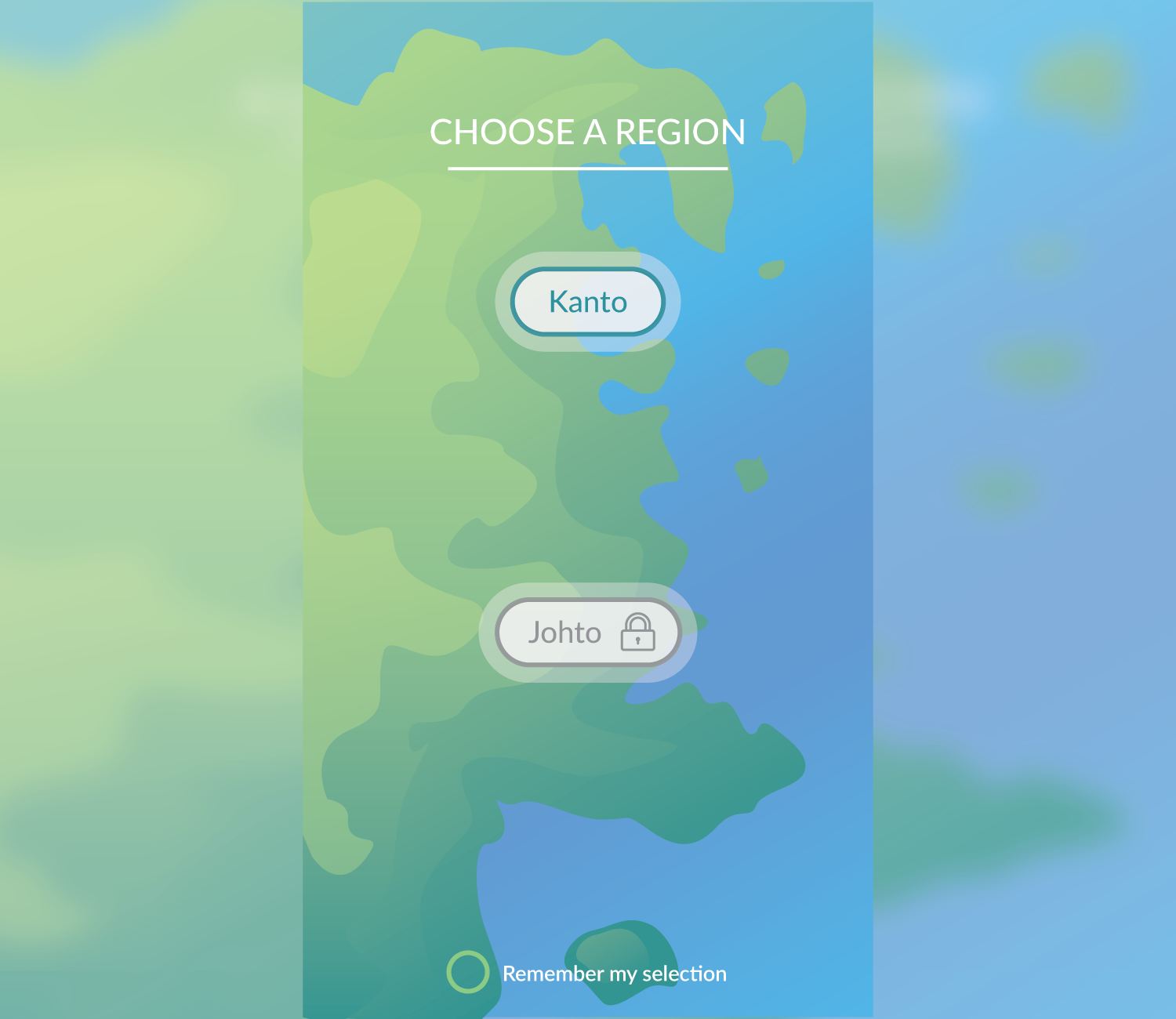
If Niantic wants to add to the more than $500 million they’ve already scored from Pokémon Go, they could let users skip the line and jump right into Generation II…for a fee. We don’t love this idea because new users will get more out of Generation II if they’ve put some time into Generation I. Plus we’re salty completionists who feel like players should have to earn their unlocks, but hey: app developers are going to do what they have to do to get those in-app purchases.
Existing user launch
This design rewards existing players for time already spent in the game by unlocking Generation II for them when it launches. The first time they choose to load it, we think it’d be fitting if Professor Oak shows up offering a choice of three new starter Pokémon from Generation II: chikorita, cyndaquil, or totodile.
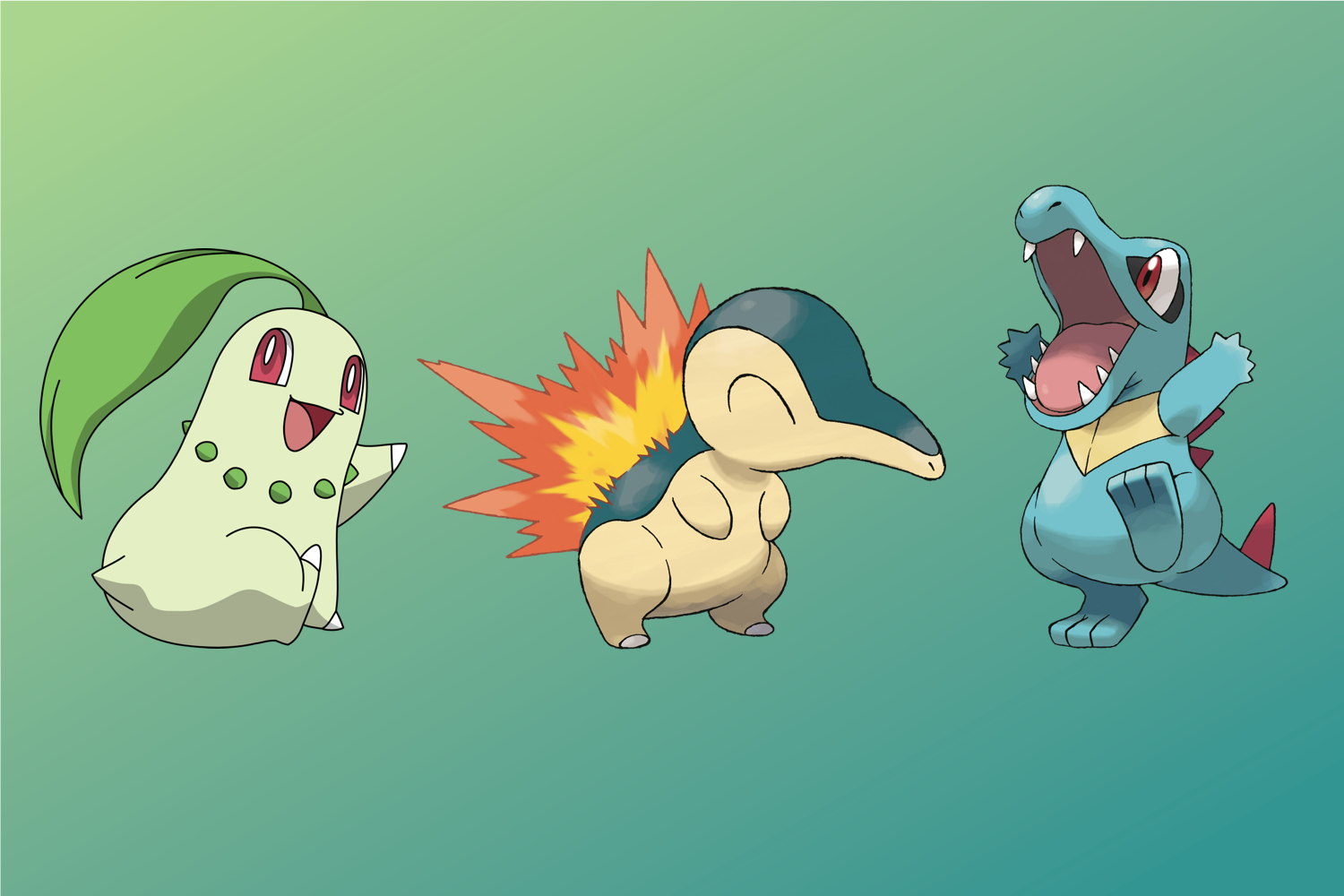
Then when players venture outside, all their encounters will be with new, Generation II Pokémon. Cues in the environment will indicate that these Generation II encounters are happening in a different place. For example, Kanto is a grassy woodland, and Pokémon Go’s current non-AR encounter backgrounds reflect that. But Johto has quite a few more mountains and caves, and we can imagine that the map, load screens, and encounter backgrounds could change colors and designs to reflect that.
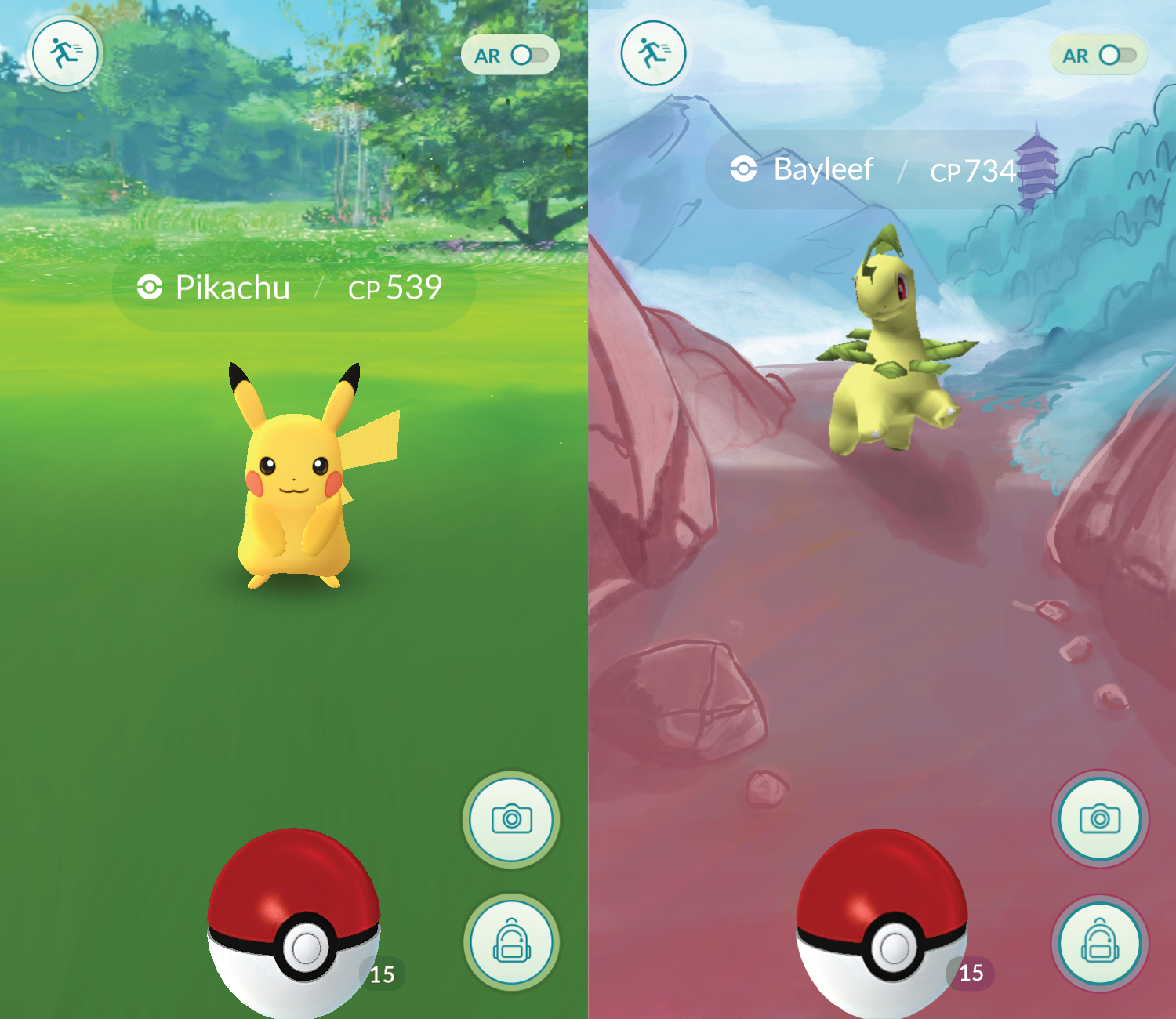
Like in their holiday events, increasing spawn rates is another tactic Niantic should use to draw lapsed players back into the game with the Generation II launch. Introducing loads of new Pokémon to catch is great; guaranteeing they’ll be all over the map is a bonus.
Tactical details
Aesthetics
What would Generation II look like? We imagine it as a new level in the same world, sort of like dropping down a pipe in Super Mario Bros when you advance on the world map. Kanto/Generation I is the first level, and Johto/Generation II is the second.
Like we mentioned above, different map coloration, catching backgrounds, and load screens could go far in making Generation II feel like a new and exciting place.
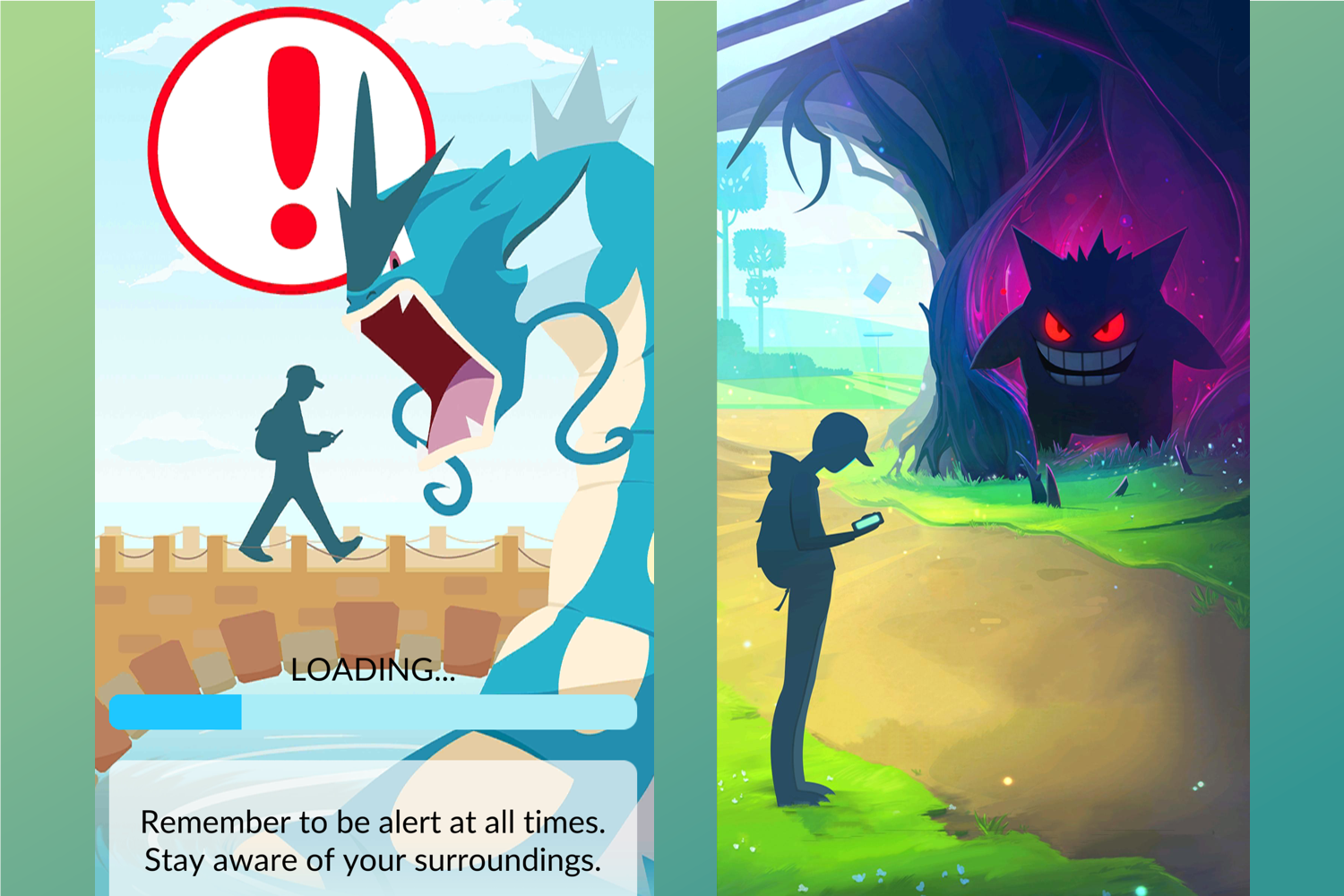
Candy naming
We see two options for addressing candy naming with Generation II. First, renaming candies to the lowest Pokémon on an evolutionary tree if Generation II introduces a pre-evolution: e.g., pikachu candies would change to pichu. It’s a small shift and feels logical.
The alternative to switching candies from evolutionary tree-specific to general type, so specific pikachu candies would become more general electric candies. This is problematic, though, because players could then easily power up rare normal-type Pokémon like porygon or lickitung because of having heaps of normal type candies from rattatas and other super common Pokémon. It would cause CP inflation.
Candy amounts
If you’re an experienced player who’s unlocked Generation II, the game should ease candy demands in Generation I. This tactic incentivizes players to return to Generation I and rewards them for previous play.
There’s a simple way to shift the numbers here. If a Generation I Pokémon is evolvable, cut the number of candies required to do so in half in Generation II. E.g., pikachu to raichu costs 50 candies in Generation I, so make pichu to pikachu cost just 25 candies when Generation II comes out. If there’s a later evolution Pokémon on the tree, just double the number of candies. This way you don’t change too many of the existing evolution costs. If Niantic were just to use their current system, you would need a total of 250 candies to evolve a garbage pokemon like zubat into golbat and then crobat.
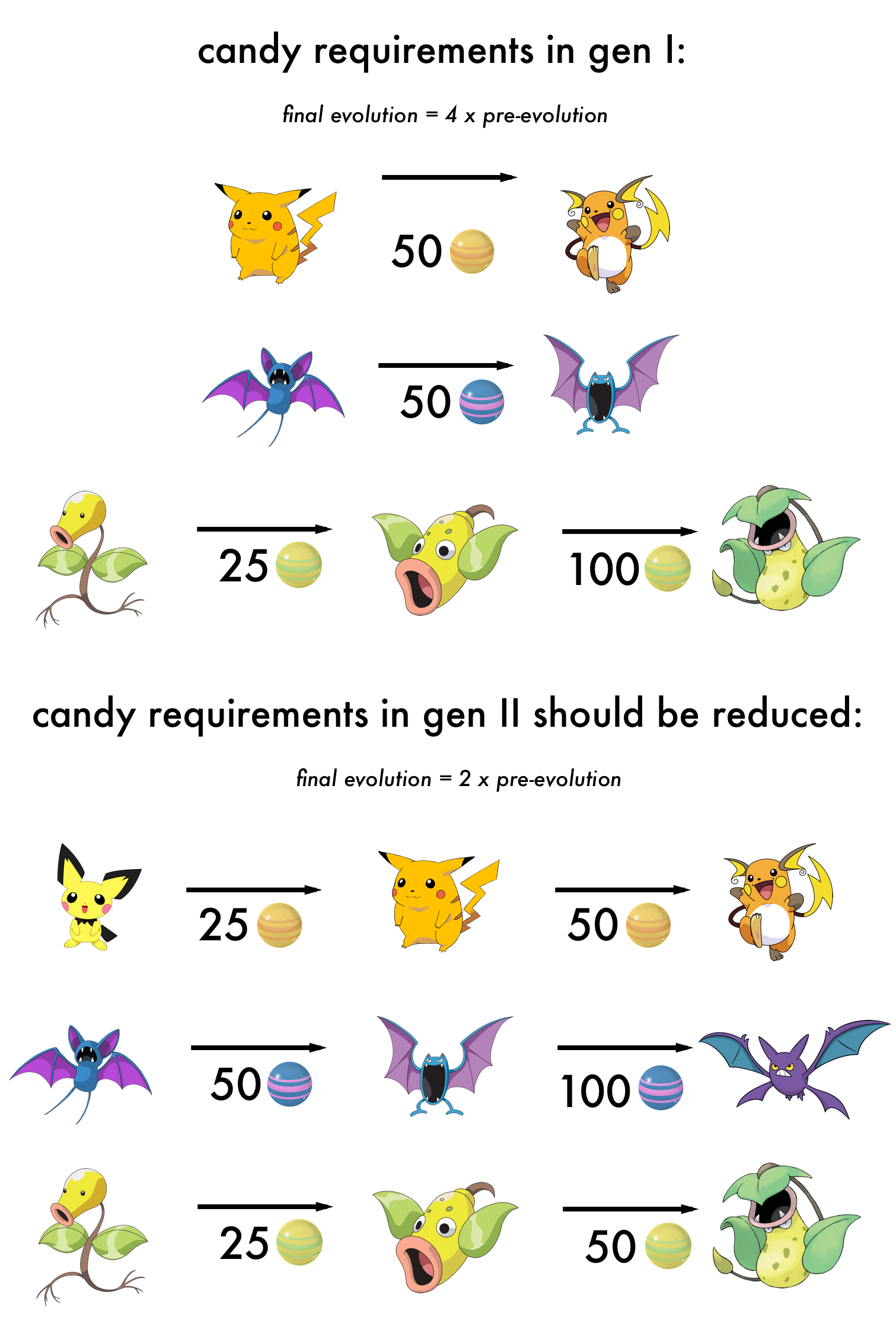
New Generation II eggs
Eggs caught in Johto mode should only hatch Generation II creatures. That means Niantic could introduce new egg types so players can be smart about which eggs they incubate. Right now, Generation I 2k eggs are green, 5k are orange, and 10k are purple. Generation II eggs could be visually distinct, with different spots or colors, for example. You could incubate a red 10k egg and know that a Generation II Pokémon will hatch from it, and your steps in either region you’re in would count toward it. Players could incubate a mix of Generation I and II eggs in both game modes.
If Niantic doesn’t change anything about its eggs, this will just increase the number of possible Pokémon in each egg type, making your journey to a super-rare Pokémon that much longer (literally).
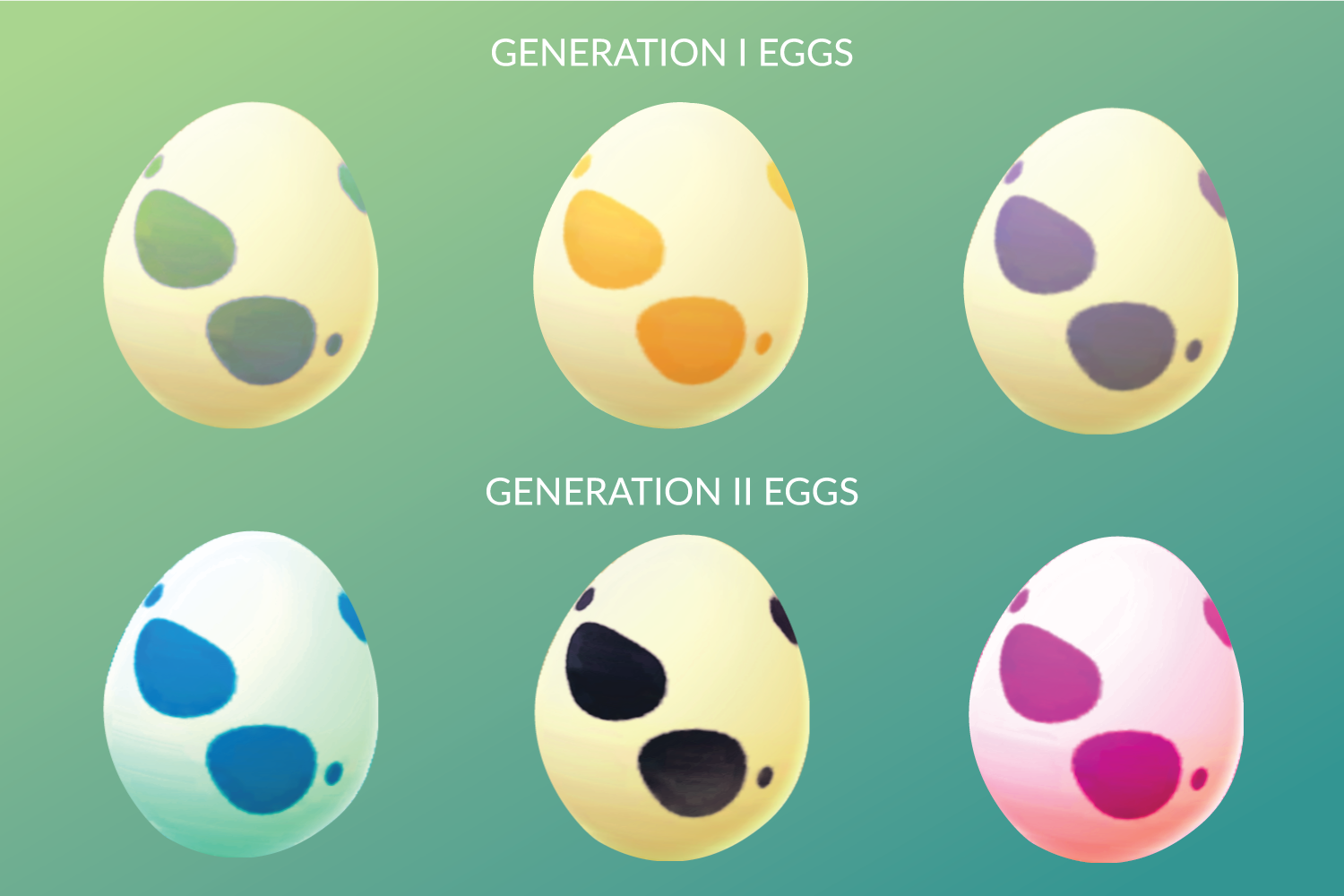
Consistent elements
If different generations represent different regions, then moving between the two is like taking a trip. You’d bring your backpack with you, preserving all your items and player history. That means that your medals, level, XP, items, backpack, Pokédex, egg walking progress, avatar outfit, and buddy remain the same.
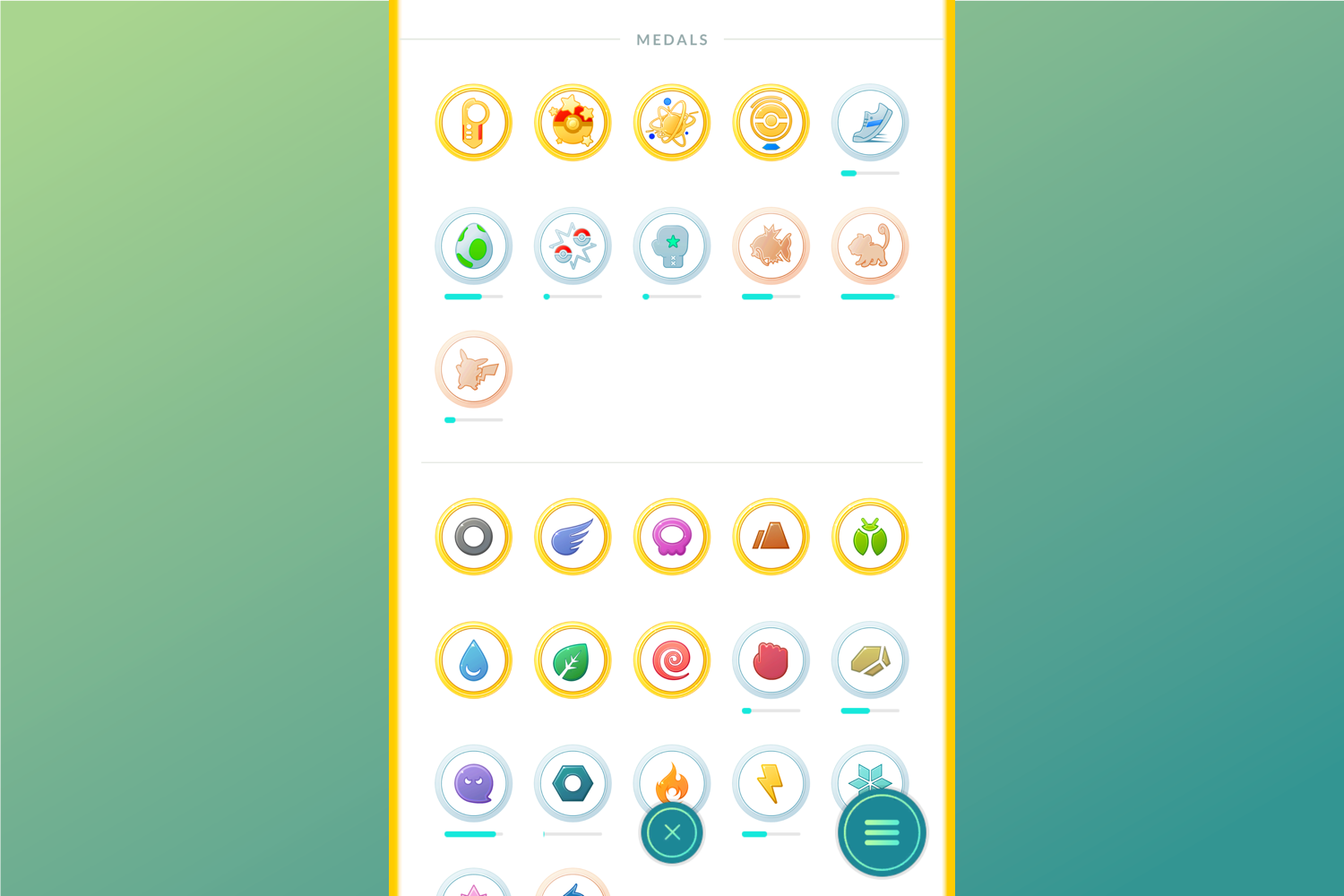
Obviously the map and Pokéstops will stay the same, too: we live in Boston, and we’ll still live in Boston whether we load in Generation I or II, even if we’re pretending to change regions in the game. The neighborhood pokestops and gyms won’t change.
That means that gym battling and training will be consistent, too. If our backpacks and items move with us through regions, we’ll be able to train with any Pokémon we have on us. We’ll begin to see gyms with a mix of Generation I and II Pokémon in them. Hopefully that means fewer level 10 gyms stacked with only lapras, dragonite, vaporeon, and snorlax (which is already changing because of a recent CP shift from Niantic). This would incentivize Generation I players to unlock Generation II, because they would see what monsters they were missing out on. It would also allow users from from both generations to quest together and take down gyms.
UI design
The Pokémon Go backpack can get unruly, especially when you factor in space upgrades. It’s painful to scroll through hundreds of Pokémon as you’re evolving and keep jumping to the top of the list whenever you back out onto the map. The scroll bar is tiny and hard to press.
Adding 100 more Pokémon types in Generation II could get ridiculous if Niantic doesn’t add quick jumps to move through the backpack, maybe by groups of 25, or at least make the scroll bar bigger. And hey, Niantic? A free backpack upgrade for everyone would be a nice touch at this stage in the game.
Another option is a second backpack tab for each region. It would be to the right of the Generation I backpack and the left of the egg tab, accessible by a tap or swipe.
Given that every Pokémon has a national Pokédex number (ranging from 1 to 251 with the release of Generation II), you could display one long Pokédex or break out a regional one. The regional Pokédex would show only the generation you can currently catch in your game mode.
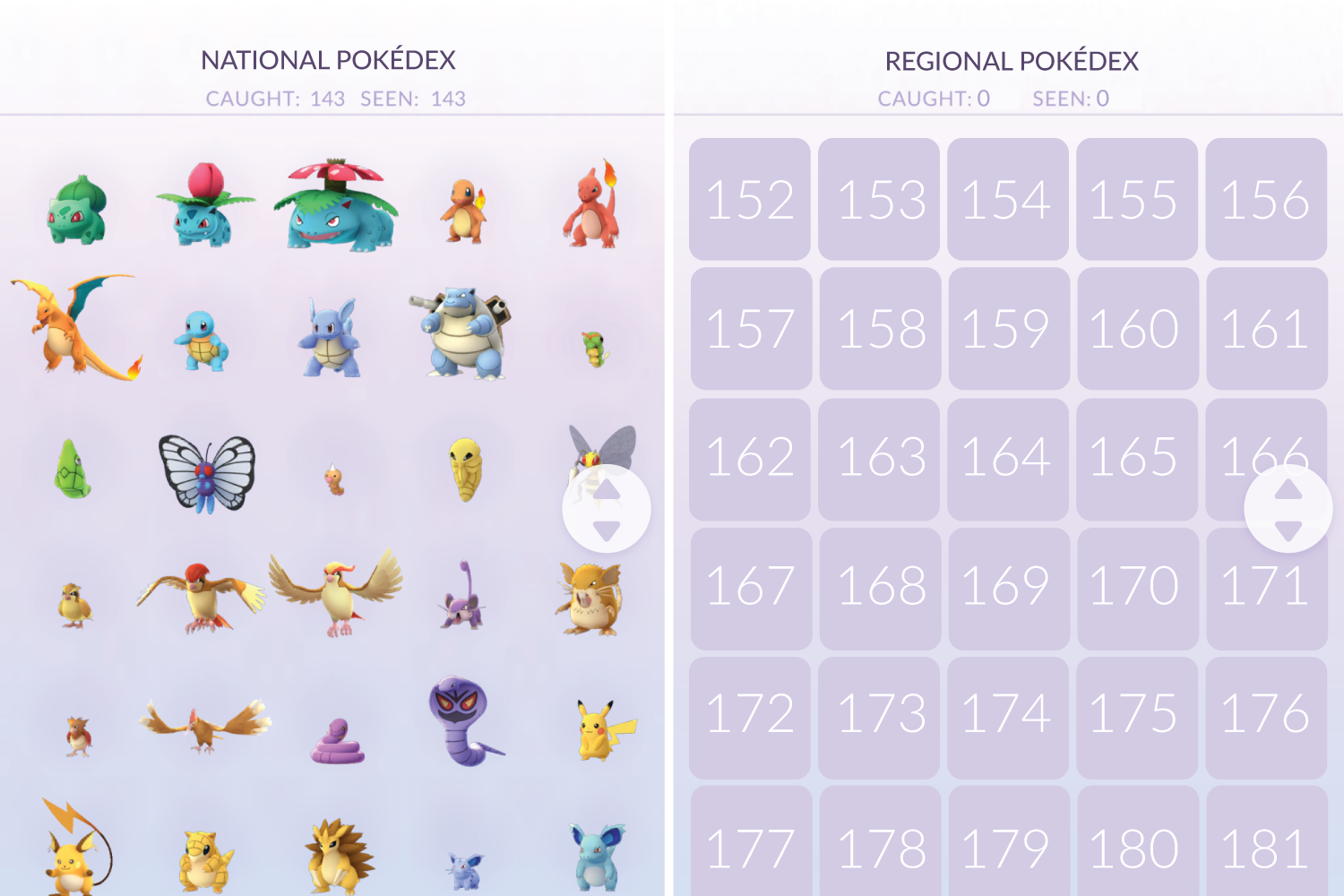
Two apps?
Before we leave the separated generation strategy, there’s another way Niantic could roll out Generation II: launch a new app for it. Pokémon Go 2, maybe?
Users would have to get the new app. Existing players could import their data using their Google account sign-in. Accomplishments and items would sync to the cloud and carry over to both apps.
The biggest issue here, aside from the annoyance of having multiple apps for what’s essentially the same game, is that new players would start in Generation II and skip Generation I content. As we discussed above, that’s not a good use of Niantic’s existing work and doesn’t lend itself to long player lifecycles.
Keeping Generation I interesting for seasoned players
Niantic can give players plenty of good reasons to come back to Generation I, even after a shiny new Generation II launch.
Legendaries, mew, and mewtwo
Bringing out the legendary birds and other missing non-regional Pokémon is the surest way to get players engaging with Generation I. Every time a rumor surfaces of one of these Pokémon appearing, the fanbase goes crazy.
Guaranteed appearance events
If players know that a high CP snorlax will appear at a certain time and place, you can bet that we’ll swarm it.
Trades
Trading is the surest way to catch them all and would lure players looking to complete their Pokédexes back to Generation I. For example, we still need the Pokémon you can only get by leaving the US (far fetch’d in Asia, Mr. Mime in Europe, and kangaskhan in Australia), but trading with players who have traveled would fill those three really annoying holes in the Pokédex.
Reduce grinding for candies and eggs
Say Niantic cuts candy requirements in half for evolutions and power-ups and increases candy generated from walking a buddy. Players would be more willing to grind for that dragonite if it cost 50 candies instead of 100. The same goes for eggs: halving their hatch distance would draw back Generation I players looking to finish those final evolutions.
Questing with less experienced friends
If a seasoned player wants to go out and catch Pokémon with a friend who’s just starting the game, she can select Generation I so both people encounter the same monsters at the same places and times on the map. That’s one of the most fun parts of the game, and it’d be a shame to lose it. But if that seasoned player wants to work on building her Pokédex beyond Generation I, she can select Generation II/Johto next time.
About the authors
Sarah Downey is a principal at the venture capital firm Accomplice, which is a sponsor of Upload. She focuses on frontier tech investments like augmented reality, virtual reality, and gaming. Before Accomplice, she was a marketer at two startups and an attorney. She’s currently level 29 on team Instinct.
Isabella Patton is a product data evangelist at Hopper, a mobile travel app using big data to predict flight prices and help travelers book flights and save money. Before Hopper, Isabella was a data scientist and growth marketer. She’s currently level 31 on team Instinct.
Ingrid Pierre is a designer who specializes in what you might call “lady tech.” She designed the popular Ovia suite of apps for fertility, pregnancy, and parenting and now is working at a startup helping moms find flexible work. She once created a Pokémon-themed mechanical keyboard that was featured on Gizmodo. She’s currently level 30 on team Mystic.

